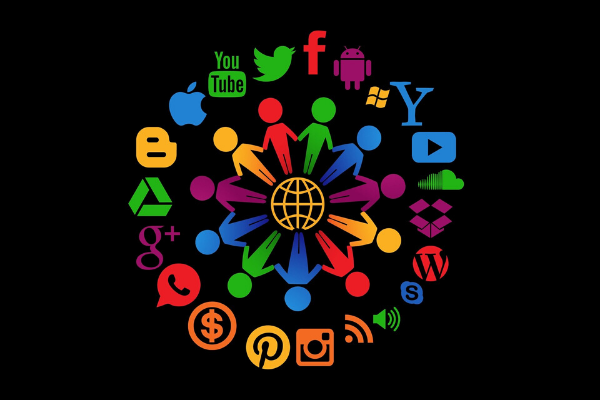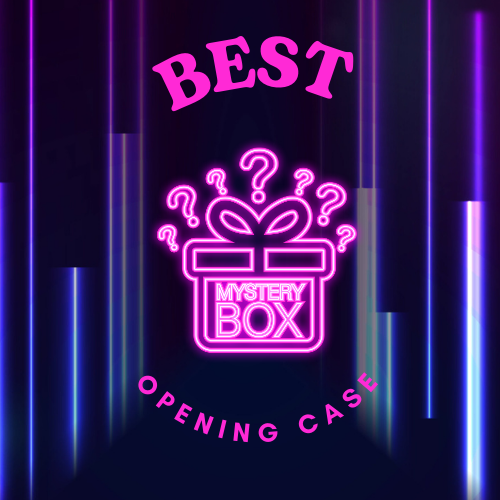The Fusion of Philanthropy and Surprise

In today’s cluttered landscape of charitable appeals, where every organization competes for donor attention through emails, social media ads, and heartfelt videos, one unconventional tool is making waves: the mystery box. Known for their success in e-commerce and gaming, mystery boxes are now being reimagined as powerful fundraising tools. At the heart of this innovation lies the fusion of two powerful psychological triggers: the joy of giving and the thrill of the unknown.
Mystery boxes transform the donation process into something far more engaging. Instead of a passive experience, donors receive a package filled with surprises, making the act of giving feel more like an adventure. These boxes don’t just incentivize contributions; they create an emotional experience that can deepen the connection between donor and cause.
The Mechanics Behind the Magic
So how exactly does this model work in the nonprofit world? It begins with curation. Charities work with sponsors, artists, or local businesses to source items that align with their mission or values. These items might include anything from handmade goods, sustainable products, exclusive merchandise, to unique thank-you notes from beneficiaries.
Once the items are selected, they are assembled into boxes that vary in theme, size, or mystery level. Donors choose a contribution tier and receive a corresponding box. Some campaigns offer guaranteed contents within certain tiers, while others leave it entirely to chance. This gamified approach has proven to be an especially effective way to appeal to younger demographics who crave novelty and experience-based giving.
Organizations typically launch these campaigns through their websites, crowdfunding platforms, or during live fundraising events. Transparency is key. While the contents are a surprise, nonprofits often give clues to reassure donors about the type and quality of items inside. In some cases, they disclose the average retail value of the boxes to demonstrate the worth of the donor’s contribution.
Psychology at Play: Why Mystery Boxes Motivate Donors
There’s more going on than just fun and games. The effectiveness of mystery boxes taps into well-documented psychological phenomena. First, there’s the IKEA effect, where people value experiences and items more highly if they feel a sense of discovery or personal involvement. Opening a mystery box creates that exact kind of emotional imprint.
Then there’s the element of variable reward, a mechanism rooted in behavioral psychology. The unpredictability of what’s inside each box generates anticipation, which can be neurologically rewarding. In fact, the act of unboxing triggers dopamine spikes—a biochemical reward system that reinforces behavior. When paired with the positive moral emotions of charitable giving, the result is a highly satisfying, memorable experience.
Finally, there’s social signaling. People enjoy showing others that they support a cause, and the unique, often Instagrammable contents of a mystery box make that much easier. Donors aren’t just giving; they’re receiving a conversation piece, a story to tell, or content to share. This virality enhances a campaign’s reach far beyond the initial circle of donors.
Case Studies: Charities Leading the Charge
One of the earliest adopters of mystery boxes in fundraising was a wildlife conservation nonprofit that partnered with eco-conscious brands to deliver boxes filled with bamboo utensils, recycled notebooks, and plant-based snacks. Their target audience—millennial and Gen Z donors—responded enthusiastically. The campaign not only exceeded its fundraising goal by 40%, but also resulted in hundreds of social media shares and user-generated content featuring the boxes.
Another example comes from a children’s hospital that used mystery boxes in a holiday-themed fundraiser. Each box contained handmade ornaments created by young patients, alongside small gifts donated by local businesses. For every box sold, proceeds funded critical medical equipment. The deeply personal nature of the contents helped forge a powerful emotional connection between the donor and the hospital’s mission.
Art-focused nonprofits have also jumped on board. Museums and galleries have launched mystery art boxes containing mini prints, limited-edition merchandise, and behind-the-scenes content from curators. For supporters of the arts, these boxes offer a tangible way to stay engaged during periods when public access is limited.
Boosting Donor Retention with Surprise and Delight
One of the perennial challenges in fundraising is donor retention. Many organizations struggle to keep donors coming back year after year. Mystery boxes offer a unique solution by shifting giving from a transactional act to a compelling, experiential relationship.
The « surprise and delight » element of mystery boxes creates a lasting memory. This not only increases the likelihood of repeat donations, but also enhances donor lifetime value. Some charities have taken it a step further by introducing subscription-style mystery boxes. Donors sign up for monthly or quarterly contributions and receive themed boxes that evolve with the seasons or the campaign’s progress.
In one such program, a global literacy nonprofit offered quarterly boxes tied to a particular region they serve. Each box included books, cultural artifacts, and updates from the field. The result was a 65% higher retention rate compared to their standard recurring donation model. This continuity helped build a sense of shared purpose between donors and the mission, making supporters feel like part of an ongoing journey.
Designing the Perfect Fundraising Mystery Box
Creating a successful fundraising mystery box isn’t just about throwing items into a package. It requires intentionality. First and foremost, the box needs to reflect the charity’s brand and story. Every element, from packaging to product selection, should reinforce the mission and inspire trust.
Next, it’s important to consider the donor experience. Unboxing should feel special—like a gift, not a transaction. Attention to detail matters: high-quality materials, cohesive design, and thoughtful curation can transform a simple box into a meaningful encounter.
Finally, charities must plan for logistics and scalability. Fulfillment, inventory tracking, shipping, and customer service all play a role in ensuring a smooth experience. Many organizations partner with third-party fulfillment services or work with local volunteers to manage the physical workload.
The Role of Influencers and Social Media
Influencer marketing has become a cornerstone of modern fundraising campaigns, and mystery boxes provide the perfect vehicle for these partnerships. When influencers unbox live on TikTok, Instagram, or YouTube, they lend authenticity and reach to the campaign. Their followers get to witness the surprise, the quality, and the impact of the box in real time.
Some campaigns go even further by creating limited-edition influencer-curated boxes. A beauty influencer might select cruelty-free products for an animal rescue campaign, while a tech reviewer could curate gadgets to support STEM education initiatives. This personalization taps into niche audiences and creates a sense of exclusivity that drives demand.
User-generated content also plays a key role. Donors are encouraged to share their own unboxing experiences, often using custom hashtags and branded packaging designed for the camera. This creates a ripple effect that can dramatically amplify visibility and social proof.
Legal and Ethical Considerations
With any innovation in fundraising, transparency is paramount. Charities must be clear about how proceeds are used, what percentage goes to the cause, and what donors can reasonably expect to receive. Unlike for-profit mystery box sellers, nonprofits carry the added responsibility of ethical stewardship.
Tax implications must also be considered. In many regions, only the portion of a donation that exceeds the value of goods received can be considered tax-deductible. Organizations must clearly communicate this to avoid confusion or misreporting. Additionally, if raffles or prize-based elements are introduced, charities must comply with local gaming and sweepstakes regulations.
Respect for donor data is another essential point. With the increased interactivity of mystery box campaigns comes the temptation to collect detailed user information. Charities must ensure they adhere to data protection laws and avoid sharing donor data with third parties without explicit consent.
Looking Ahead: A Lasting Shift or a Passing Trend?
Are mystery boxes just a novelty or the beginning of a broader transformation in charitable engagement? While it’s too soon to declare them the future of fundraising, early indicators suggest they are far more than a fleeting trend. Their strength lies not just in their novelty, but in their ability to create emotionally resonant experiences that build loyalty and deepen impact.
As digital natives become a larger share of the donor base, experiential and interactive giving models will likely gain traction. Mystery boxes align perfectly with this evolution. They offer immediate gratification, sensory engagement, and shareable moments—all while advancing a good cause.
Charities that succeed with mystery box campaigns do so not because they embrace gimmicks, but because they understand the psychology of giving. They recognize that in an attention-starved world, experience is currency. By turning donations into stories, surprises, and social connections, mystery boxes are redefining what it means to give.
Not just a transaction. Not just a cause. But an adventure waiting to be unboxed.
